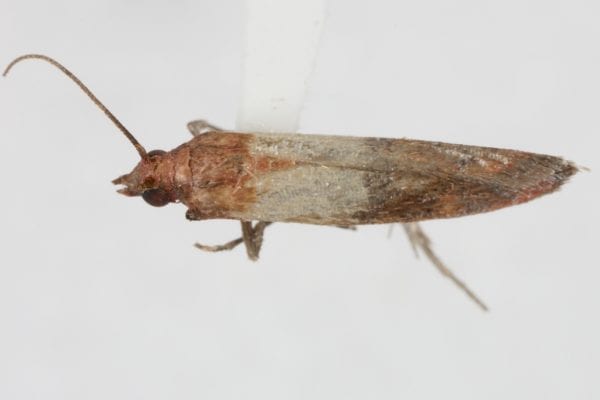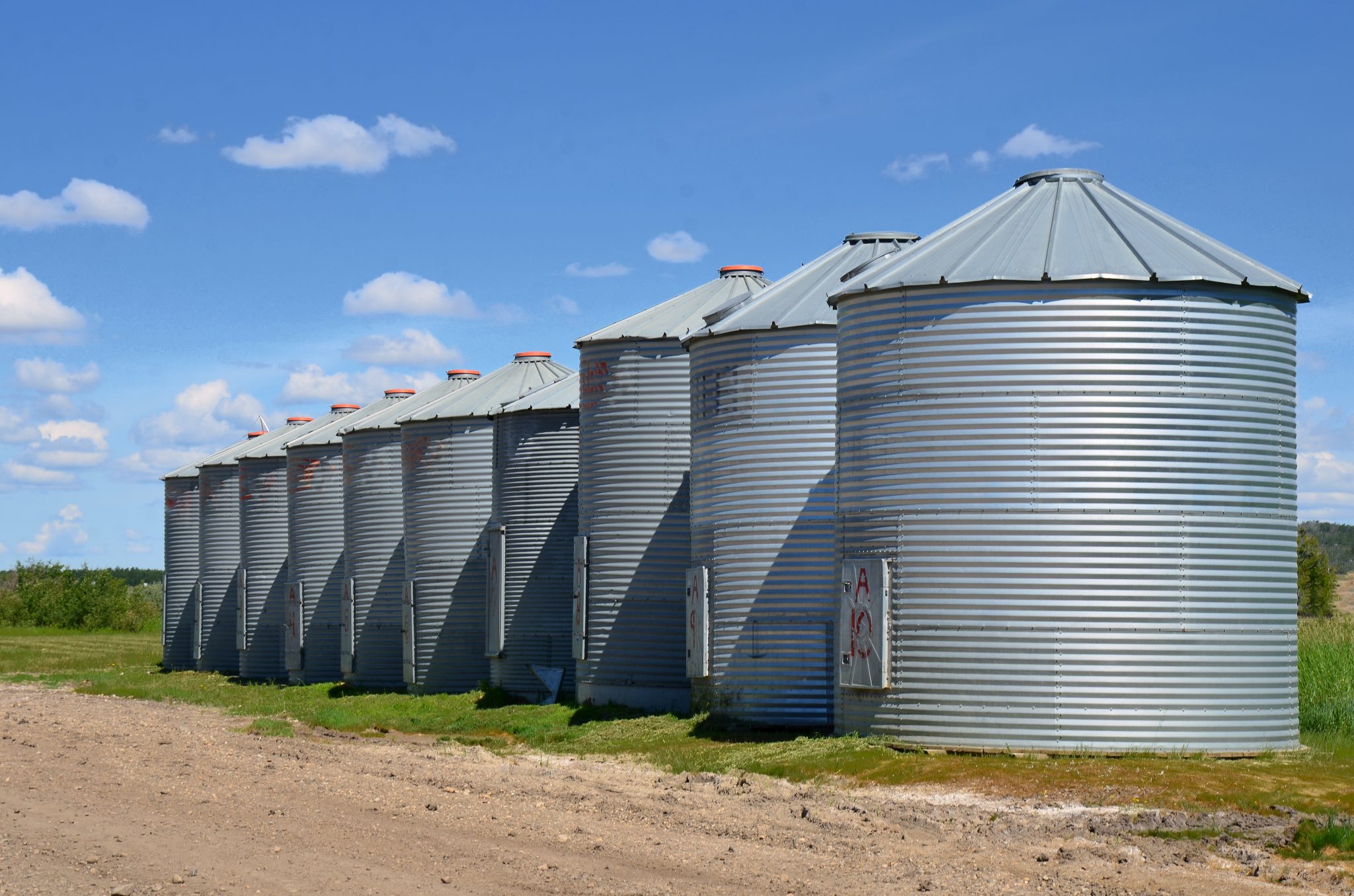Crop Production

There are several tactics to controlling pests in grain bins, many of which begin before the grain is stored. The goal is to store grains with the lowest possible number of insects. Strategies may include cleaning empty bins inside and out, managing weed or rodent problems, and sealing any cracks or gaps.
Storage periods of one year or longer are common. During this time, grain is undisturbed and remains at risk for insect damage. As spring approaches, small insect populations can quickly increase because of the increasing temperatures. The risk is especially high when Alabama experiences warm, moist weather from spring through fall. Warm grain is an ideal environment for stored grain pests. Higher temperatures cause these insects to feed, grow, and reproduce faster. During this time, if a bin contains a high number of insects, an additional treatment may be warranted.
Top Dress Treatments
If the grain is going to be stored for more than a few months, and a protectant was not added when the grain was loaded into the bin, a top dress treatment may be helpful. Top dress treatments are applied to the surface of the grain. These treatments prevent pest infestations from the top of the structure. Most top dress treatments are incorporated into the top four inches of the grain. Some require a greater mixing depth and some are applied with no mixing. Be sure to read the label for specific instructions. A list of insecticides approved as top dress treatments can be found in the Alabama Extension Stored Grain IPM Guide.
Headspace Treatments

Figure 1. Indianmeal Moth
Image by Pat Porter, Texas A&M Agrilife Extension
One particular pest that is problematic is the Indianmeal moth (Figure 1). Indianmeal moths feed on damaged kernels. They are typically found in the top four inches of grain. Activity will pick up in the spring as temperatures warm. The top of the grain is the first to warm up and this is where growers may see Indianmeal moths. An infestation of Indianmeal moths can contaminate the grain through frass and silk webbing. Live insects and insect parts in grain can lead to dockage.
Indianmeal moth infestations are typically limited to the top few inches, so for this particular pest, fumigation is not required for control. If people have had problems with Indianmeal moths previously, or find populations when sampling, a headspace treatment may be warranted. This method of treatment is when polyvinyl strips that contain the insecticide dichlorvos are hung in the headspace of the bin.
Fumigation
Fumigation may be required when insect populations become too high and cannot be controlled with other treatments. Aluminum phosphide is the chemical used for fumigation. It is sold typically in pellet/tablet forms or as paper sachets, plates, or strips. When these are exposed to moisture and heat, they give off phosphine gas.
A fumigation management plan is necessary before any fumigant is applied. The fumigant must be left inside the bin long enough to be effective. Check the label for specific requirements. A list of approved fumigants can also be found in the the Alabama Extension Stored Grain IPM Guide.
Safety
Inhalation of fumigants is the most common and dangerous method of exposure. Mild exposure can lead to an overall feeling of sickness, ringing in ears, fatigue, nausea, and pressure in the chest. Moderate poisoning can lead to weakness, vomiting, stomach and chest pain, diarrhea, and difficulty breathing. Severe poisoning can occur within a few hours to a few days following exposure. This includes fluid forming in the lungs, dizziness, blue or purple skin, unconsciousness, or death. If a grower is unfamiliar with grain bin fumigation, they should hire an outside company with trained professionals.

